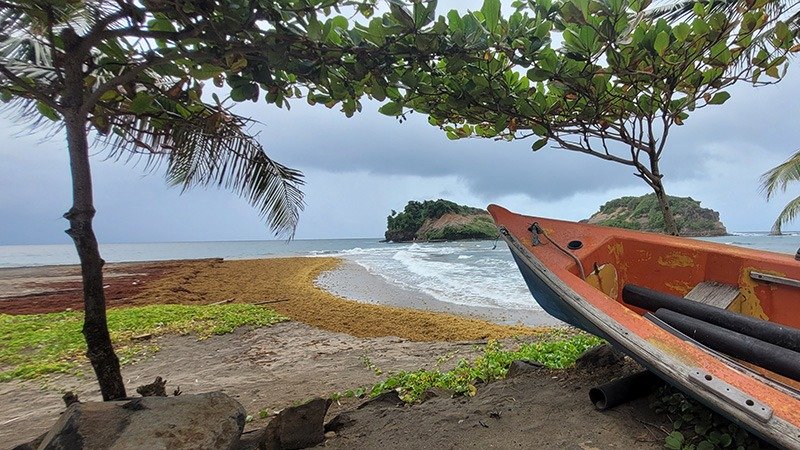Recent visits to the Caribbean reveal an unwelcome development on many beaches: an abundance of brown seaweed known as sargassum. This invasive species is not only unsightly and odorous but poses significant challenges, including clogging boat propellers, disrupting fishing activities, and endangering marine wildlife.
Understanding Sargassum: A Widespread Concern
Sargassum affects a large swath of the Caribbean, stretching from the northern tip of Mexico’s Yucatán Peninsula to Brazil. It impacts popular destinations like Grand Cayman and Martinique, raising concerns among tourism officials as its frequency shows no signs of decreasing. Efforts to clean up the seaweed often lead to it washing ashore again within a day, creating a continuous cycle of labor and expense.

Satellite monitoring has shown that concentrations of sargassum in the Atlantic reached alarming levels last winter, with figures indicating a 40% increase compared to previous peaks. Typically, the season for sargassum peaks between May and August, amplifying fears among tourism stakeholders.
The Financial and Environmental Impact
The cleanup efforts were staggering; last year alone, the expenditure in Mexico exceeded CAD 18 million. Moreover, the challenge lies in disposing of the collected seaweed, which poses logistical issues for affected regions.
Tourism establishments are adapting to the situation in various ways. Some resorts within larger chains are facilitating transportation to alternative beaches, allowing guests to escape the sargassum. As noted by Nancy Drolet from One Caribbean Canada, when faced with contaminated beaches, encouraging clients to explore other locations is crucial.

Innovative Solutions for a Persistent Problem
To combat the ongoing sargassum issues, some resorts have installed booms to trap the seaweed before it reaches the shore. Notably, Antigua and Barbuda have received assistance from Japan in the form of a harvester to tackle this environmental challenge.
Environmental specialists anticipate that over 37,000 tons of sargassum will wash ashore in the Mexican state of Quintana Roo this year, heavily affecting tourist hotspots like Cancun and the Riviera Maya.
On recent visits to Marriott properties in the Riviera Maya, different strategies became evident. At the vast Marriott Cancun, sargassum was visible, yet guests gravitated toward the lively pool area, showcasing a shift in preference. Conversely, the luxurious EDITION at Kanai maintained pristine beaches thanks to regular maintenance. Guests at Paraiso de la Bonita, also a part of Marriott’s Luxury Collection, found it appealing to lounge by the pool despite some sargassum on the beach.

Navigating Guest Expectations
As Glaucia Canil, Director of Sales and Marketing at Marriott Cancun, highlighted, predicting the arrival of sargassum remains challenging. Although there has been a temporary decrease in seaweed presence recently, its patterns are not easily forecasted.
Travel advisors are encouraged to maintain transparency with clients about the sargassum situation. Images circulating on social media may not accurately reflect current beach conditions. Advising vacationers to explore other activities and attractions beyond the beach can enhance their experiences.
With the booking window for Canadian travelers typically ranging from 6 to 8 weeks, it remains uncertain if sargassum is impacting winter vacation bookings.
Looking Ahead: Potential for Change
Interestingly, the extensive issue of sargassum may transition from a nuisance to a resource. In an episode of Undecided, innovative uses for sargassum are explored, including its role in creating biofuel in Barbados by combining it with wastewater from rum distilleries and sheep manure.
From natural dyes to biodegradable plastics and even cosmetics, this ‘gift’ from nature may eventually find beneficial applications. However, for now, the focus remains on addressing the immediate challenges presented by sargassum in Caribbean destinations.



